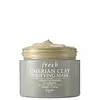What's inside
What's inside
 Key Ingredients
Key Ingredients

 Benefits
Benefits

 Concerns
Concerns

 Ingredients Side-by-side
Ingredients Side-by-side

Water
Skin ConditioningGlucose
HumectantCitrus Limon Fruit Extract
MaskingCitrus Clementina Fruit Extract
Skin ConditioningCitrus Sinensis Fruit Extract
AntioxidantGlycerin
HumectantFructose
HumectantVaccinium Myrtillus Fruit Extract
Skin ConditioningPyrus Cydonia Seed Extract
MaskingSaccharum Officinarum Extract
MoisturisingHelianthus Annuus Seed Oil
EmollientCitrus Aurantium Dulcis Fruit Extract
MaskingAcer Saccharum Extract
Skin ConditioningTocopheryl Acetate
AntioxidantTocopherol
AntioxidantButylene Glycol
HumectantSclerotium Gum
Emulsion StabilisingParfum
MaskingSodium Citrate
BufferingTetrasodium EDTA
Xanthan Gum
EmulsifyingPanthenol
Skin ConditioningCaramel
Cosmetic ColorantCitric Acid
BufferingAscorbyl Tetraisopalmitate
AntioxidantMagnesium Aspartate
Skin ConditioningZinc Gluconate
Skin ConditioningCI 75120
Cosmetic ColorantCopper Gluconate
Skin ConditioningPhenoxyethanol
PreservativePotassium Sorbate
PreservativeSodium Metabisulfite
AntioxidantLimonene
PerfumingWater, Glucose, Citrus Limon Fruit Extract, Citrus Clementina Fruit Extract, Citrus Sinensis Fruit Extract, Glycerin, Fructose, Vaccinium Myrtillus Fruit Extract, Pyrus Cydonia Seed Extract, Saccharum Officinarum Extract, Helianthus Annuus Seed Oil, Citrus Aurantium Dulcis Fruit Extract, Acer Saccharum Extract, Tocopheryl Acetate, Tocopherol, Butylene Glycol, Sclerotium Gum, Parfum, Sodium Citrate, Tetrasodium EDTA, Xanthan Gum, Panthenol, Caramel, Citric Acid, Ascorbyl Tetraisopalmitate, Magnesium Aspartate, Zinc Gluconate, CI 75120, Copper Gluconate, Phenoxyethanol, Potassium Sorbate, Sodium Metabisulfite, Limonene
Solum Fullonum
AbsorbentWater
Skin ConditioningGlycerin
HumectantButylene Glycol
HumectantPentylene Glycol
Skin ConditioningCocamidopropyl Betaine
CleansingVitis Vinifera Seed Oil
EmollientOlea Europaea Leaf Extract
PerfumingXanthan Gum
EmulsifyingFusanus Spicatus Wood Oil
MaskingLavandula Angustifolia Flower Water
Skin ConditioningAnthemis Nobilis Flower Oil
MaskingSodium Chloride
MaskingPolyacrylamide
C13-14 Isoparaffin
EmollientLaureth-7
EmulsifyingBHT
AntioxidantPhenoxyethanol
PreservativeFarnesol
PerfumingLinalool
PerfumingSolum Fullonum, Water, Glycerin, Butylene Glycol, Pentylene Glycol, Cocamidopropyl Betaine, Vitis Vinifera Seed Oil, Olea Europaea Leaf Extract, Xanthan Gum, Fusanus Spicatus Wood Oil, Lavandula Angustifolia Flower Water, Anthemis Nobilis Flower Oil, Sodium Chloride, Polyacrylamide, C13-14 Isoparaffin, Laureth-7, BHT, Phenoxyethanol, Farnesol, Linalool
 Reviews
Reviews

Ingredients Explained
These ingredients are found in both products.
Ingredients higher up in an ingredient list are typically present in a larger amount.
Butylene Glycol (or BG) is used within cosmetic products for a few different reasons:
Overall, Butylene Glycol is a safe and well-rounded ingredient that works well with other ingredients.
Though this ingredient works well with most skin types, some people with sensitive skin may experience a reaction such as allergic rashes, closed comedones, or itchiness.
Learn more about Butylene GlycolGlycerin is already naturally found in your skin. It helps moisturize and protect your skin.
A study from 2016 found glycerin to be more effective as a humectant than AHAs and hyaluronic acid.
As a humectant, it helps the skin stay hydrated by pulling moisture to your skin. The low molecular weight of glycerin allows it to pull moisture into the deeper layers of your skin.
Hydrated skin improves your skin barrier; Your skin barrier helps protect against irritants and bacteria.
Glycerin has also been found to have antimicrobial and antiviral properties. Due to these properties, glycerin is often used in wound and burn treatments.
In cosmetics, glycerin is usually derived from plants such as soybean or palm. However, it can also be sourced from animals, such as tallow or animal fat.
This ingredient is organic, colorless, odorless, and non-toxic.
Glycerin is the name for this ingredient in American English. British English uses Glycerol/Glycerine.
Learn more about GlycerinPhenoxyethanol is a preservative that has germicide, antimicrobial, and aromatic properties. Studies show that phenoxyethanol can prevent microbial growth. By itself, it has a scent that is similar to that of a rose.
It's often used in formulations along with Caprylyl Glycol to preserve the shelf life of products.
Water. It's the most common cosmetic ingredient of all. You'll usually see it at the top of ingredient lists, meaning that it makes up the largest part of the product.
So why is it so popular? Water most often acts as a solvent - this means that it helps dissolve other ingredients into the formulation.
You'll also recognize water as that liquid we all need to stay alive. If you see this, drink a glass of water. Stay hydrated!
Learn more about WaterXanthan gum is used as a stabilizer and thickener within cosmetic products. It helps give products a sticky, thick feeling - preventing them from being too runny.
On the technical side of things, xanthan gum is a polysaccharide - a combination consisting of multiple sugar molecules bonded together.
Xanthan gum is a pretty common and great ingredient. It is a natural, non-toxic, non-irritating ingredient that is also commonly used in food products.
Learn more about Xanthan Gum